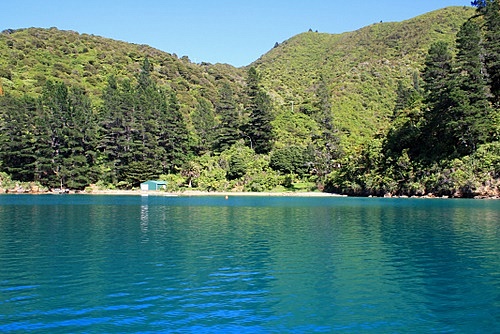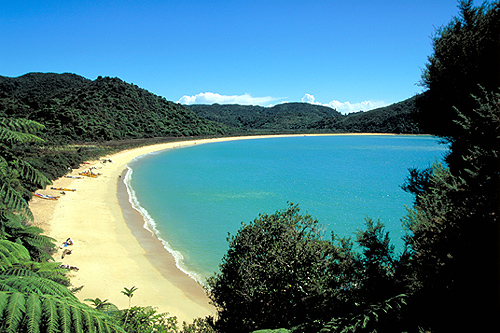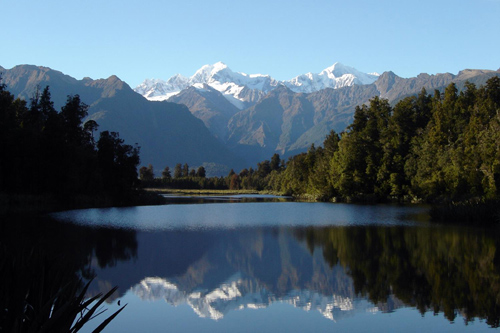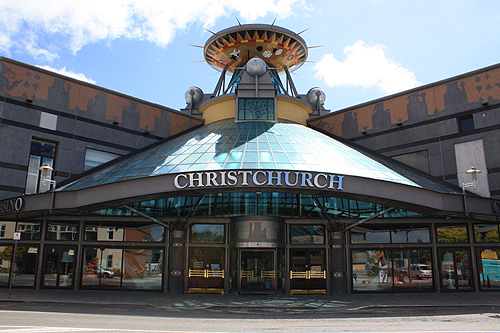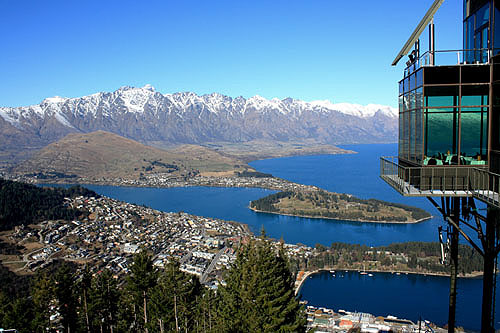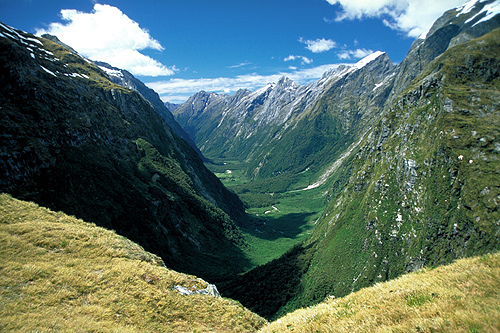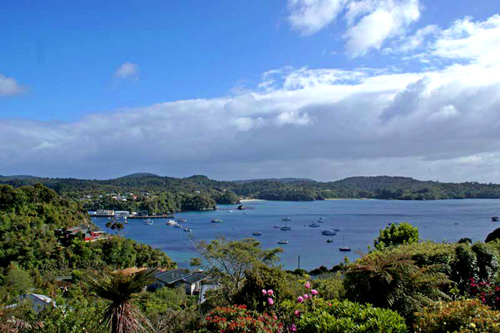The South Island of New Zealand
The South Island is the biggest island in the New Zealand archipelago and the main geographical feature is the Southern Alps which run the full length of the island. These mountains are young with over 10 peaks that exceed 3000 metres, thousands of glaciers, and many world-class ski fields.
The coastline is also huge with stunning beaches on the northern coast, a more regular coastline in the east and south, and a rugged indented coastline on the west culminating in steep fiords in the south-west.
The climate and landscapes of the South Island are diverse. There are lush ancient rainforests, steep mountain valleys, near desert like areas, carved river gorges, and placid lakes.
The beautiful city of Christchurch is the biggest city on the island and third largest in the country. It lies to the east on a flat plain but was devastated by previously unknown earthquake faults from a series of earthquakes. Today the city is still in its rebuilding phase which sees many new modern buildings pop up among the old stately English architecture that survived the quakes or were restored.
The regions of the South Island are as follows:
Marlborough
The Marlborough region is situated in the north of the South Island. The region is the sunniest in New Zealand and many world class wines are produced here. The two main towns are Blenheim and Picton. A scenic and complex area of waterways called the Marlborough Sounds offers fishing, boating, or trekking opportunities. Read more →
Nelson / Tasman
The Nelson region is also blessed with a great climate and contains some of the best beaches in the country. Nelson is the main city and is a good base for organising trips to the famous Abel Tasman National Park. Other areas of interest include Kahurangi National Park, Nelson Lakes National Park, Farewell Spit, and Rainbow Ski Field. Read more →
West Coast
Further to the south and on the west coast is The West Coast region, the most isolated part of New Zealand. This area is squeezed between a rugged coastline and the Southern Alps. The area is sparsely populated and contains large areas of wilderness including steep mountains and ancient Beech forests. Due to the steepness of the landscape, glaciers decend into rainforests and come close to the coastline. Read more →
Canterbury
Over the otherside of the Southern Alps lies the Canterbury region. Most of this region is a huge plain, but it also includes part of the Southern Alps and even the highest mountain, Mt Cook. So it is a region of great contrasts. Christchurch the major city is the biggest city in the South Island and second biggest city in the country. Recently the city suffered two major earthquakes and was extensively damaged. But rebuilding is underway and the city has great plans to become a green city with unique architecture. Read more →
Otago
Immediately to the south of the West Coast and Canterbury regions lies the Otago region. Central Otago is a scenic mountainous area with a continental climate, i.e., extreme temperatures, (hot summers and freezing winters), due to its inland position. Queenstown, New Zealand's premier tourist town is located here. As you head toward the east coast, a maritime climate prevails with increasing greener landscape and less extreme temperatures. Dunedin the biggest city is located on this coast and has some of New Zealand's oldest buildings as well as great natural attractions. Read more →
Southland
At the bottom of the South Islands lies the Southland region. Southland is home to Fiordland National Park which is one of the biggest national parks in the world. This park contains the best scenery in the country. Notable features of this World Heritage area are the steep mountains, waterfalls, fiords, all surrounded in lush beech forest and rainforest. Read more →
Stewart Island
Just below the South Island lies the third biggest island in the country, Stewart Island. The island has one small town called Oban, with the remainder of the island being a protected wilderness area and is managed as a National Park. The island is a safe haven for many of New Zealands endangered birds such as the Kiwi and Takahe. Read more →
Author & photographer: David Johnson (Virtual New Zealand). Providing a credit or link is appreciated.
Our content: logos, site names, text, photos, and website design are protected by international copyright law.
Original versions of our photos can be purchased / licensed & web versions can be shared subject to conditions.

